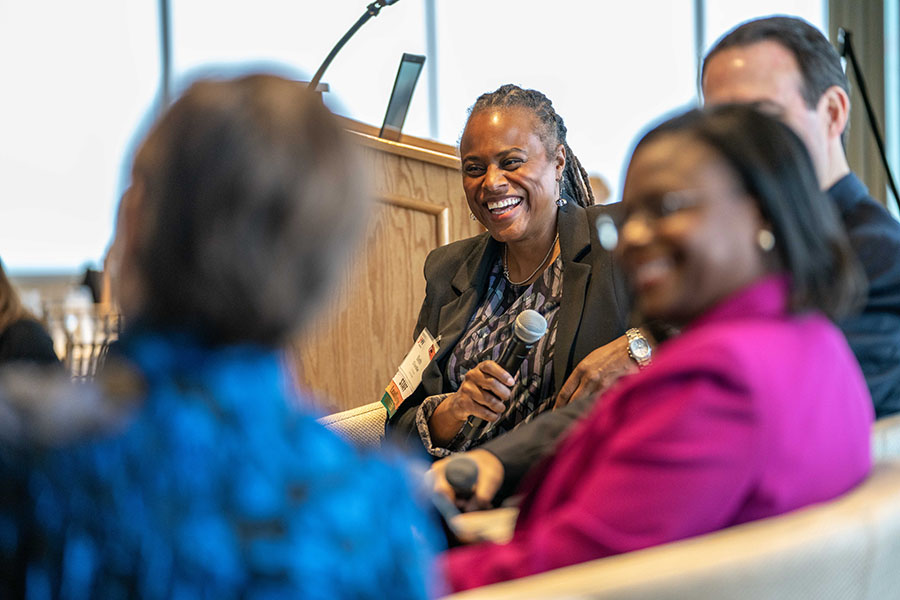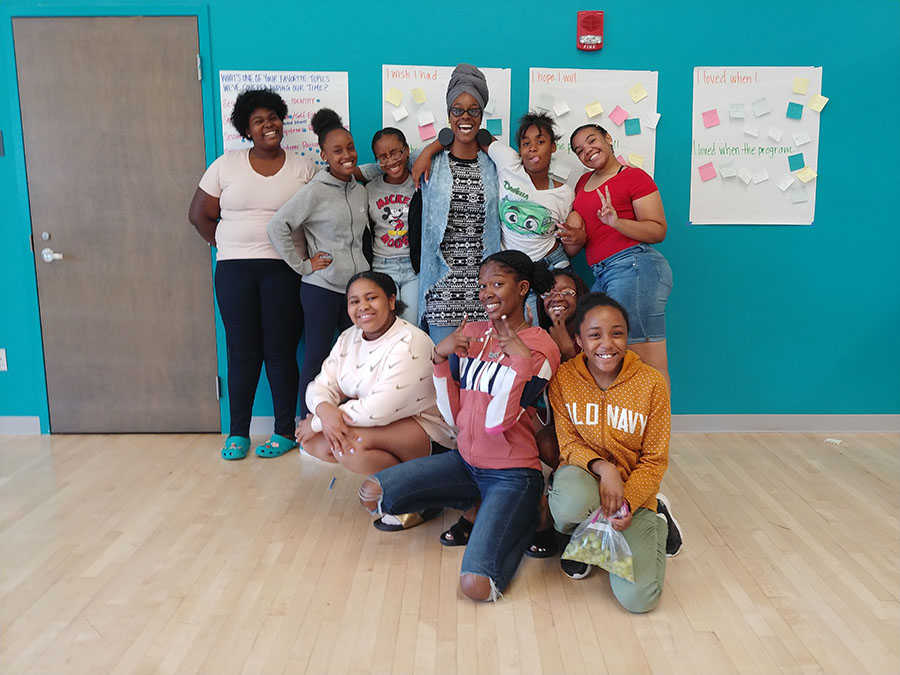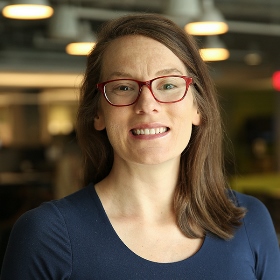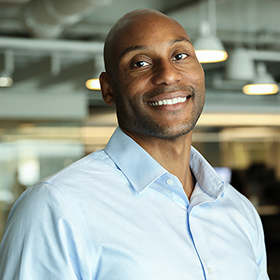Nonprofits and NGOs of all sizes work to address enormous and complex social challenges. Their mission statements define their reason for being and often reflect big aspirations—ending homelessness, halting climate change, achieving racial equity. While an important source of motivation and inspiration, these missions are typically so broad that they can encompass almost any combination of programs and activities. That means they aren’t particularly well suited to help nonprofit leaders address their central challenge: figuring out how to make the biggest difference possible with the resources available to them. That’s where strategy comes in.
Strategy is all about getting critical resource decisions right—allocating time, talent, and dollars to the activities that have the greatest impact potential. Developing a clear, effective strategy can be a long process and often involves difficult tradeoffs. To smooth the path, we believe it is important to agree on your organization’s intended impact and theory of change.[1]
Intended impact defines the results your organization will hold itself accountable for achieving within a reasonable timeframe (e.g., 5–10 years). It specifies WHO your population of focus is, WHERE your organization will do its work, and WHAT specific outcomes you want to achieve. Theory of change explains HOW your organization will achieve that impact—the approaches you will undertake and the other actors you will work with or alongside.
Of course, there is much more to strategy than just intended impact and theory of change. However, getting clear on these two concepts can help your organization answer a broader set of questions critical to developing a sound strategy—about programs, growth aspirations, funding and economics, organization structure, and capabilities. All of these elements are interconnected and together enable an organization to advance its mission.
This free toolkit can help you get a kickstart on this work for your organization.
Download
Consider the experience of YW Boston. As the first YWCA in the nation, YW Boston has been advancing equity for over 150 years. It has the same mission as other YWs: “to eliminate racism, empower women, and promote peace, justice, freedom, and dignity for all.”
Like many organizations with a long history, YW Boston’s programs had grown over time, served a variety of audiences, and did not necessarily fit together around a clear goal. “With a budget under $3 million and six separate programs, we realized that we were not able to have the impact we wanted in the city because we had such a disparate portfolio,” says YW Boston’s Beth Chandler, who had recently become the organization’s CEO at the time it began to look at its intended impact and theory of change. “We felt that we should be at the forefront of issues of racism and empowering women, but we were getting lost because it was hard to say who we were and what we were doing—since we were doing so much. So we decided, with support of our board, to take a hard look at how we could have the greatest impact and influence in Boston.”
In this article, we will explore intended impact and theory of change in depth and look specifically at how YW Boston used these tools to begin clarifying its strategy.

A Closer Look at Intended Impact and Theory of Change
Recall that intended impact defines the results your organization will hold itself accountable for achieving. Since your organization will ideally measure its progress against the intended impact statement you develop, it is important to get specific:
- WHO is your population of focus? This may not be the only population with whom you achieve results, or the only population you work with. Rather, it is the group you will prioritize in your work. Be as specific as possible here in terms of demographics, including naming race, ethnicity, gender, or economic status as relevant.[2]
- WHERE will your organization do its work? Consider the specific geographies and settings in which your organization will work.
- WHAT specific outcomes do you want to achieve? Outcomes refer to the changes or results achieved by or for the population you have prioritized in your work. This differs from “outputs,” which measure activities (e.g., 50 trainings delivered).
For more on intended impact and theory of change see our collection of case studies, articles, and tools on the topic.
The YW Boston team knew they would have to get clearer on the impact they aspired to achieve. Says Chandler, “We wanted to be able to say, if our programs are successful, here are the outcomes that the city of Boston will see. Here are the group or groups that will benefit from the work that we do, and this is how they will benefit.”
The organization began by making an important decision to center two elements of its mission: eliminating racism and empowering women. With this choice, the WHO of its intended impact became more apparent: women of color. While YW Boston served a range of constituents across the city, women of color were a natural population to focus on given the organization’s long history of working for racial and gender equality, its distinctive skill set and expertise, and the identified needs in the city.
Specifying the WHERE was also straightforward for the organization: Boston. For other organizations, clarifying their geographic focus may be among the most critical questions they face—especially for those that have been expanding into different neighborhoods, cities, regions, or nations.
YW Boston then had to define WHAT outcomes the organization was best positioned to help women of color in Boston achieve. Within the city’s institutions and organizations, systems of oppression, exclusion, racism, and sexism reinforce each other. Through policies, practices, behaviors, and attitudes, these systems disadvantage marginalized groups—especially women of color. To better understand where these issues were showing up across the city—in health, in safety, in education, in leadership—Chandler and her team embarked on an analysis of community need. This work, combined with thoughtful reflection on where the organization could have the greatest impact (given its skill set, experience, and values), led YW Boston to zero in on a long-term goal of increasing the number of women of color in leadership positions in Boston, as a lever for change.
In parallel to this intended impact work, YW Boston also took a hard look at its theory of change: HOW, at a high level, the organization would achieve that impact. Hallmarks of a strong theory of change include:
- It should be a target, not a mirror—articulating what your organization will do to achieve its intended impact, not merely listing of your current programs and activities. Of course, much of what your organization does today is likely to be important, but you might need to add, remove, or change some elements to achieve your intended impact.
- It should capture the approaches and capabilities that make your organization distinctly good at what it does. These may exist at the organization level (e.g., our practices are informed by a deep understanding of the communities we serve) or at the program level (e.g., our programs are grounded in a rigorous base of evidence).
- It should be specific enough to help the organization understand which elements are driving or impeding progress toward its goals. For example, if progress is slow, is it because your theory of change is not bearing out in the desired results, or because you are not fully implementing your theory of change?
The YW Boston team refined its theory of change by looking first at the organization’s assets, especially its track record of working with women of color leaders. They also studied the landscape of organizations doing similar work and engaged a range of stakeholders—board, staff, and community members—to better understand the community’s needs as well as the gaps in services and supports where YW Boston could play a distinctive role. They looked at what other organizations focused on leadership opportunities for women of color were doing, to see if there were promising approaches to adopt and also to avoid duplication of work.
Ultimately, YW Boston arrived at a theory of change anchored in the belief that increasing the number of women of color in leadership positions would require both supporting women and girls of color directly and creating more inclusive work environments. More specifically, YW Boston would cultivate the pipeline of future women leaders of color while at the same time dismantling systemic racism in the institutions in which they work.
YW Boston—Intended Impact and Theory of Change
Mission: YW Boston is dedicated to eliminating racism, empowering women, and promoting peace, justice, freedom, and dignity for all.Intended Impact: Organizations will shift their demographic structure toward greater diversity and inclusion at all levels, creating more inclusive environments where women, people of color, and especially women of color can succeed, and resulting in an increased number of women of color in leadership positions in Boston.
Theory of Change: Through our diversity, equity, and inclusion services as well as our advocacy work and youth leadership and empowerment program, we help individuals and organizations change policies, practices, attitudes, and behaviors.
Three Essential Practices for Developing Your Intended Impact and Theory of Change
In working with scores of nonprofits over the past two decades, Bridgespan teams have noted three especially important practices that can help set intended impact and theory of change work up for success: engaging stakeholders systematically and genuinely; pressure testing drafts of your intended impact and theory of change; and building in opportunities for flexibility and continued learning.
Engage stakeholders on your draft intended impact and theory of change
Staff, board, clients, funders, community members, partner organizations—these are the people who know your organization, the context in which it works, and the challenges it is working to address. Organizations use various ways to engage these stakeholders. Indeed, many will base their initial draft of their intended impact and theory of change on what they have already learned from them.
In addition, we have found that a critical step is engaging a diverse range of stakeholders after you have created a first draft of your intended impact and theory of change but before it is fully set. This kind of engagement, while often time-consuming, is vital to opening up fresh thinking and enabling the leadership team to see around any potential blind spots—all in service of getting to a better “answer.” This inclusive approach also helps the organization secure the internal and external buy-in needed to carry out any major shifts in its work.
As part of YW Boston’s efforts to engage a multitude of stakeholders, the leadership team held group sessions with partner organizations, community leaders, and funders to look at its draft hypothesis about what the organization should be working on in the future. Going into the process, the team saw leadership development as its greatest lever for change, one that it pursued through its empowerment program for girls of color and its professional development program for diverse leaders in the Boston workforce. But one of those sessions challenged that view. Recalls Beth Chandler: “We had people tell us that there are a lot of programs that are trying to ‘fix people,’ but few that try to change environments within organizations and institutions. It would be great if there was someone who was saying ‘how do we change workplaces rather than try to change people?’” This perspective ultimately prompted YW Boston to complement its efforts to develop current and future leaders with an approach that involved working directly with organizations to create inclusive environments.
Engaging stakeholders effectively requires openness to new ideas. It requires explicitly confronting the implicit or unconscious bias (including similarity bias and hierarchy bias) that often stands in the way of truly listening to and learning from others. In doing so, organizations should consider such questions as: How can we create forums to get honest input from those within and close to the organization’s leadership, given underlying power dynamics? Who are we inviting to participate in developing and providing feedback on the first draft of our intended impact and theory of change and why?
Be prepared for the process to raise unexpected issues or expose key gaps in your initial thinking. Rather than being setbacks, these developments are actually signs that you are doing this work right—that your stakeholders are meaningfully shaping your intended impact and theory of change.
Pressure test your intended impact and theory of change
Developing an intended impact and theory of change begins with aspirational visioning: what is the change you will hold yourselves accountable for advancing in the world and how can you use your capabilities and expertise to help accelerate that change? While such exercises soar on generative, expansive thinking, the work ultimately needs to be grounded in real world data and experience. That means pressure testing and refining your early drafts, as part of a highly iterative process.
Pressure testing is all about identifying areas where there are gaps in logic, where you feel less confident, and where further learning and research is required. This is an opportunity for you and your team, in collaboration with your stakeholders (see above), to take on the mindset of a skeptic.
One of the most useful ways we have seen organizations pressure test their intended impact is by confirming that they have identified an important need experienced by their population of focus that’s not being sufficiently addressed by others and that, when addressed, will lead to significant progress toward their intended impact. Here, it is often important to look at data disaggregated by race, ethnicity, gender, geography, and other critical dimensions, given that average or overall data can mask important needs. Some organizations have found it valuable to go beyond immediately identifiable needs and look at the root causes—at the public policies, institutional practices, and cultural representations that feed into the disparities they are trying to address. Doing so was part of what prompted YW Boston to take on work that could change the institutions in which current and potential leaders of color would work.
Specific considerations for different types of nonprofit organizations
A wide range of nonprofits and NGOs can benefit from working on their intended impact and theory of change. While the essential practices for developing a clear, effective intended impact and theory of change hold true for all, there are specific considerations for different types of organizations to keep in mind when approaching this important work. For example, since advocacy organizations need to be responsive to windows of opportunity that are often determined by external events and actors, it works better for these organizations to focus on getting really clear on the audiences and systems they need to influence and the tactics they are best positioned to use (e.g., litigation, grassroots organizing). Here we offer sample case studies of the intended impact and theory of change process for various types of organizations, sharing the first-hand experiences of nonprofit leaders Bridgespan has had the privilege to support:• An organization with multiple program areas: IMPACCT Brooklyn
• An organization with a mix of direct service and advocacy work: The Bail Project
• An advocacy- or research-focused organization: FAWE
In pressure testing your theory of change, one way to start is by asking if you are using the most effective approaches possible to achieve your intended impact. For example, when YW Boston contemplated its approach to leadership pipeline development, it researched strategies other organizations were using in their leadership programs. “We wanted to find out what were things that others had found successful,” explains Beth Chandler.
Other important questions to consider asking include whether you are better equipped than others to address the needs of your target population, and whether your theory of change is feasible—do you have the funding, talent, and systems required to execute successfully? (See the "How to Develop Your Intended Impact and Theory of Change" toolkit for an expansive set of pressure-testing questions.)
Build in opportunities for flexibility and continued learning
At their best, your intended impact is a medium-term goal and your theory of change is a conceptual roadmap for how your organization aims to achieve that goal. Given the dynamic environments in which most nonprofits operate, a common critique is that intended impact and theory of change are too linear and rigid, suggesting a predictable chain of events in which if the organization does A and B, C will necessarily happen. The intricate schematics often used to depict theories of change add to the impression that they are set in stone. One of the great benefits of a strong intended impact and theory of change is that it can incorporate new experience, evidence, and understanding—and can itself be changed to reflect these developments.
To ensure that the theory of change functions as a living concept, there are several things you can do as part of the process of developing it. Clarify what key unknowns still remain. Think about how you can understand more about these questions over time, and craft a learning agenda that captures the most important questions and how you will go about addressing them. And be alert for major changes in the organization or the environment, which should cause you to ask—are we still on the right track?
For the YW Boston, a key unknown was whether one of its main programs—InclusionBoston, a consulting service that helps organizations create the necessary cultural shift that will support inclusive policies and practices—would generate sufficient demand. To help answer this question, it worked with a volunteer consulting team to develop a pilot that would test demand and willingness to pay among Boston institutions. YW Boston will analyze the results from its pilot and other racial equity and justice efforts to understand future demand, and potentially refine the scope of change that is possible.
Putting Intended Impact and Theory of Change to Work
Intended impact and theory of change serve as a critical starting point for developing your organization’s strategy—informing key decisions and tradeoffs that reflect the aspirations of your organization’s mission as well as funding and other resource constraints. Getting clear on this shared definition of what you are trying to achieve and how you will achieve it also leads to several other practical benefits.
Most importantly, it supports more effective decision making, helping your leadership team to make strategic tradeoffs among different programs, activities, and investments. For YW Boston, the biggest reason it engaged in the process in the first place was to help it make hard choices with greater confidence and consistency across the organization. With its new level of clarity about its intended impact and theory of change, it took a closer look at its programming and related advocacy work to assess which of these aligned most closely. Beth Chandler explains, “Having clarity about the impact that we really want to have in the city has helped us be able to think differently about our resources and how we allocate them.”
For many organizations, this stage—making decisions to align the organization and its strategy to the intended impact and theory of change—is a challenging one. It requires hard choices about what to keep and what to change, what to invest more in and what to stop investing in. YW Boston ultimately exited its health, high school youth leadership, and youth-police dialogue programs to allow for greater focus on three core programs: a year-long skills building program for executives, diversity and inclusion consulting services for organizations, and an out-of-school-time leadership development program for middle school girls (an opportunity to reach the target population earlier, where the team’s research found a gap in services). Within these three programs, it made some shifts in the populations it served, the curriculum it used, and the outcomes it measured, in line with its intended impact. It also got clearer about how advocacy fit in with its direct service work—focusing mainly on local and state policies (like paid family leave or an initiative to make state boards and commissions more inclusive) that affect the ability of institutions in the city to be inclusive for women of color. Explains Beth Chandler, “Our intended impact and theory of change helped inform what issues it makes sense for us to lead on, and where we can best serve as an ally to others.”

Clarity on intended impact and theory of change can also help support accountability and measurement by enabling your organization to track progress against the impact goals you set out to achieve. YW Boston is partnering with a local university on an assessment tool for organizational change around diversity and inclusion. It is also investing in a new measurement approach for its goal of increasing the number of women of color in leadership positions in Boston.
Last but not least, this work often supports effective communication, allowing leaders to clearly articulate their organization’s purpose and path to key internal and external stakeholders, including funders. For YW Boston, Beth Chandler notes that the new intended impact and theory of change “has made it easier for us to talk about what we do in the city, which is something we’d had a hard time doing before, given that we had such a wide range of programming. And it has made it easier for both staff and board to be able to talk about the impact we’re having as an organization.”
Some organizations end the process of refreshing their intended impact and theory of change not all that far from where they started. Yet for almost all organizations, it can be a rare opportunity to look beyond the day-to-day work. The process is a chance to ask deeper and sometimes difficult questions, engage a broader range of stakeholders inside and outside the organization, and think about its unique capabilities, the context in which it works, and the concepts at the heart of a social mission—impact and change.
Is it time to refresh your intended impact and theory of change?
A number of different circumstances or events can trigger a refresh of your intended impact and theory of change. Often, it is a first step in undertaking a strategic planning process. But sometimes there are specific triggers:
• Change in leadership: This work can serve as an effective way to unite a leadership team around a shared vision for impact.
• Shift in the external environment: Your program model may have been disrupted or called into question by certain events (e.g., policy changes, shifts in landscape, COVID).
• Increased focus on equity: Organizations taking a fresh look at how their work intersects with the realities of structural inequities may find this process helpful in going beyond minor programming tweaks.
Getting started
Here are a few practical tips to help you get started:
✓ Ask each member of your leadership team to complete a rough draft of your organization’s intended impact and theory of change by identifying each component outlined in this article (the WHO, WHAT, WHERE, HOW).
✓ As a team, review your individual drafts together, identify areas of consensus, prioritize open questions, and develop one collective draft of your intended impact and theory of change.
✓ Begin pressure testing your collective draft through research and conversations with critical stakeholders.
✓ Take a step back and reflect on the complete picture: does your theory of change realistically lead to your intended impact?
For additional resources to help your organization develop or refresh its intended impact and theory of change, see “How to Develop Your Intended Impact and Theory of Change” toolkit.Lindsey Waldron is a manager in The Bridgespan Group’s Boston office, Butch Trusty is a partner in the New York office, Preeta Nayak is a partner in the San Francisco office, and Yvonne Betancourt is an associate consultant based in the Boston office.
The authors thank YW Boston CEO Beth Chandler for generously sharing her experience and insights. They also thank advisor Nan Stone and Bridgespan colleagues Samantha Levine, Alex Neuhoff, Gail Perreault, and Bradley Seeman for their contributions.
Download the How to Develop Your Intended Impact and Theory of Change Toolkit
Please fill out the form below to download the toolkit. We use the information we collect to help us improve our content and to inform our funders about the impact of our work. We will never share your personal information with any third party without your permission. If you'd rather not share your information, you can download a PDF of the toolkit directly by clicking here.





